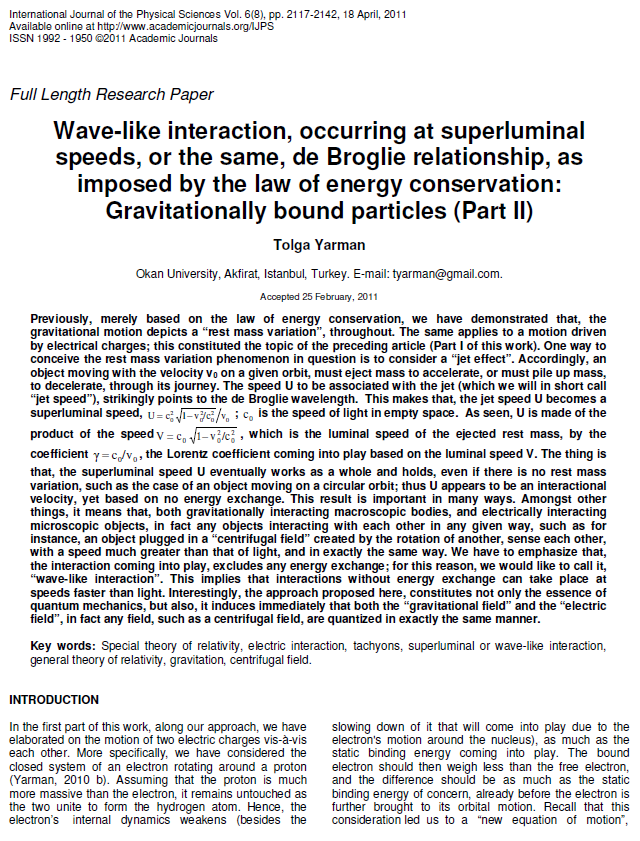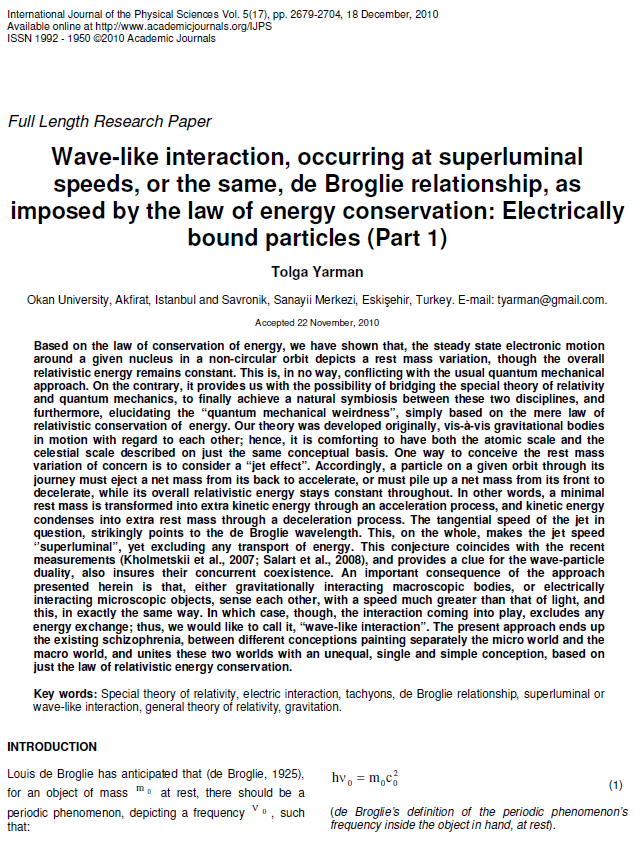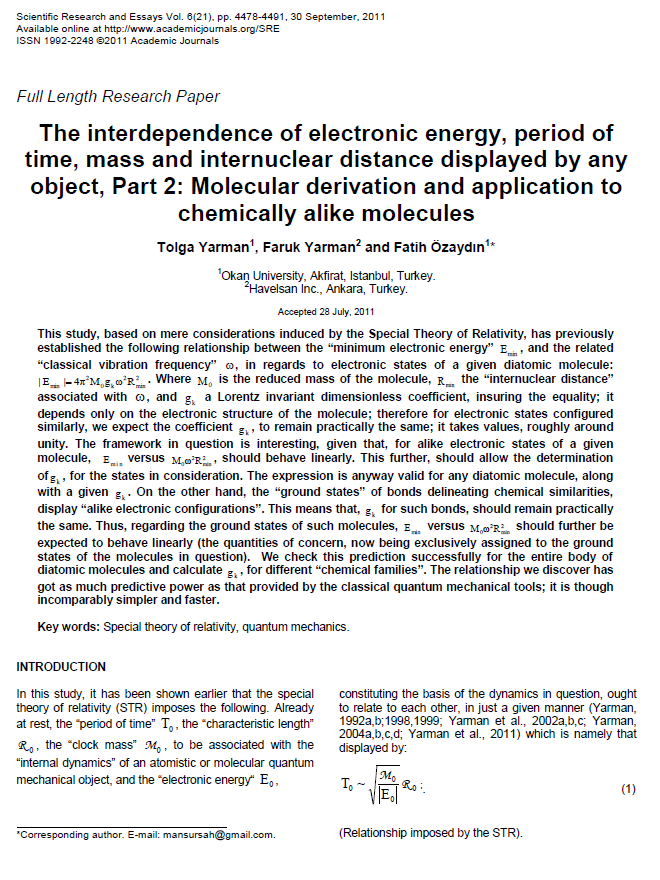REST MASS DECREASE IN A ROTATIONAL FIELD, IS TO BE ACHIEVED BY EMISSION OF A CORRESPONDING RADIATION
Makaleler, UMA Yorum ekleREST MASS DECREASE IN A ROTATIONAL FIELD, IS TO BE ACHIEVED BY EMISSION OF A CORRESPONDING RADIATION
Tolga Yarman, Metin Arik, Alexander L. Kholmetskii
ABSTRACT
When an object is bound, already at rest, to an attrational field, its rest mass must (owing to the law of energy conservation, embodying the mass and energy equivalence of the Special Theory of Relativity), get decreased.The mass deficiency coming into play, must have been discharged, somehow. A rocket model, in a free fall of the object, say, in a gravitational field, evokes that the rest mass should be discharged, via emission of photons, from the back of the falling object. The same is expected when the object is brought to a mere rotational motion (although the object in rotation is supposed to be fixed, but the intensity of the centrifugal force of concern, keeps on getting increased until a stationary state is attained). Thus, bringing an object to a rotational motion means that the energy we furnish to it, serves to dump out of it, as much rest mass (were the speed of light taken unity). This is, just like we furnish work to a refrigerator to dump out of it heat. Herein, it is shown that photons of fundamental energy are emitted, while the object is delivered to a rotational accelerational field, being the angular velocity of the rotating object. This fundamental energy, as seen, does not depend on anything else (such as mass or charge of the object), and it is in well conformity with Bohr’s Principle of Correspondence. This means at the same time that, emission will be achieved as long as the angular velocity keeps on increasing, and will cease right after the object reaches a stationary rotational motion (thus, a constant centrifugal acceleration). By the same token, one can affirm that even the rotation at a macroscopic level, is quantized, and can only assume, given angular velocities. The rate of emission of photons of concern is, on the other hand, proportional to the angular acceleration of the object. It is thus constant for a constant angular acceleration, although the energy of emitted photons will get increased with increasing , until the rotation reaches a stationary level, where after we expect no emission.
NÜKLEER ENERJİ, DÜNYA VE TÜRKİYE:
NÜKLEER ENERJİ Mİ, YOKSA NÜKLEER MACERA MI?
PROF. NÜK. MÜH. TOLGA YARMAN
PH. D., MASSACHUSETTS INSTITUTE OF TECHNOLOGY
TÜRKİYE ATOM ENERJİSİ KURUMU, NÜKLEER GÜVENLİK KOMİTESİ VE
DANIŞMA KURULU, ESKİ ÜYESİ
T.C. OKAN ÜNİVERSİTESİ MÜHENDİSLİK FAKÜLTESİ
8 Ağustos 2009
Mersin Sanayici ve İşadamları Derneği /
Mersin Nükleer Karşıtı Platformu



Son Yorumlar